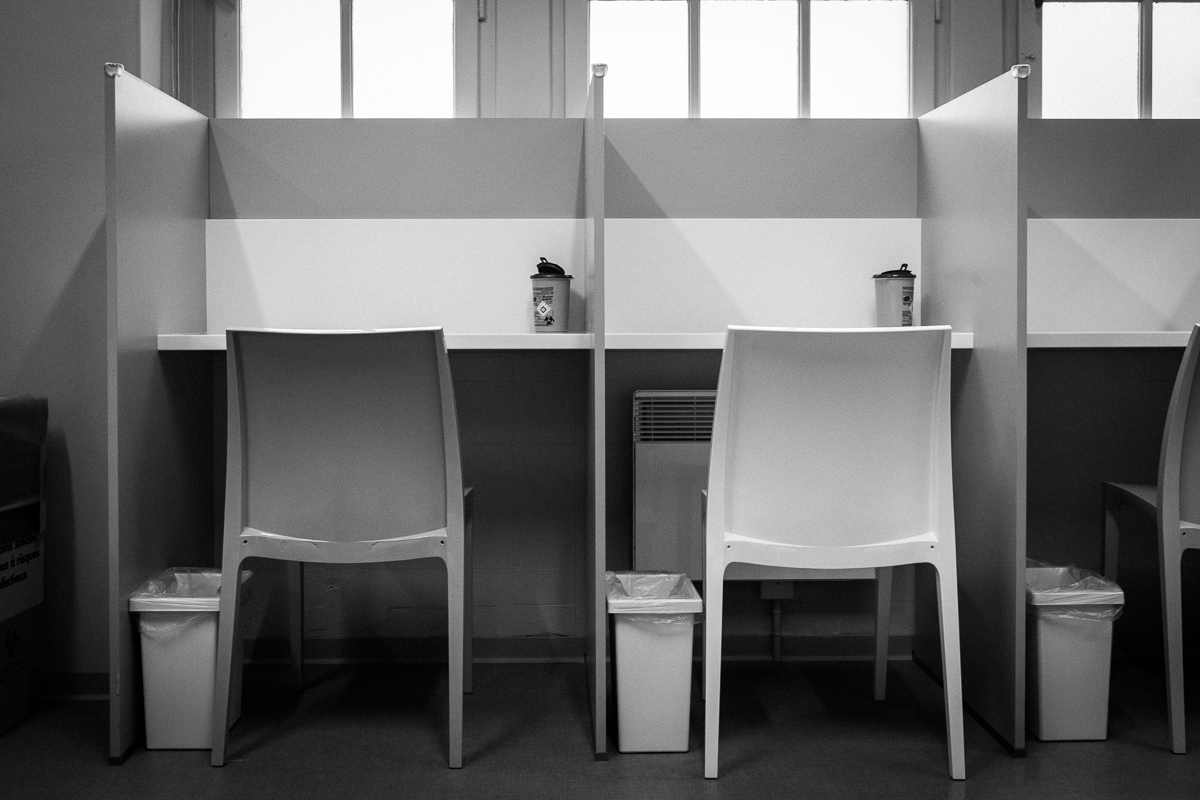A specialized hospital in Toronto opened the doors to a new supervised consumption site for its patients on April 4. Casey House is a small hospital that provides care for people living with HIV. It is now home to the first hospital-based SCS in the province, though two others in the country—Edmonton’s Royal Alex Hospital and St. Paul’s Hospital in Vancouver—have previously opened.
Casey House staff believe this is a good step that will help patients who use drugs remain safe and comfortable. Other Toronto harm reductionists echoed this sentiment, but—without criticizing the facility itself—said there is room for improvement in the model.
The SCS is now open to registered clients at the inpatient unit 24 hours a day. Outpatients can also access it from 10 am to 4 pm. Drugs that have been obtained elsewhere can be injected, snorted or swallowed in the private consumption booths at the facility.
“It’s a service that we think all hospitals should be providing.”
“It was very important to us because a lot of our clients use substances,” Lee Hodge, Casey House’s director of strategic initiatives, told Filter. “We know that when clients [who] use substances are engaged in hospital care, they’re often highly stigmatized. That can lead to people not accessing the care that they need or discharging from care early.”
Trying to prevent patients from doing drugs can lead to them simply using hospital bathrooms for this purpose, which, Hodge noted, can be a safety issue. “For us, what’s really important is that people have a safe place that they can receive the health care that they need,” he said. “It’s a service that we think all hospitals should be providing for their clients.”
Nick Boyce, director of the Ontario Harm Reduction Network, said that the SCS is something that should have been started a long time ago. It’s also something that his organization hopes to see in other hospitals. “We know that people who use drugs have big barriers when it comes to accessing health care because there’s a lot of stigma within health care settings,” he told Filter.
While the SCS will be good for people who inject or snort, it currently leaves out people who inhale or smoke drugs.
Setting up an expanded safe supply program could also help, Boyce said. Although, he noted, there are a few safe supply programs in the surrounding area, many are at capacity. At Casey House, the hospital’s doctors can prescribe safe supply to inpatients, Hodge said, but they are unable to maintain it after the patients are discharged.
And while the SCS will be good for people who inject or snort, it currently leaves out people who inhale or smoke drugs. This is an issue when, according to Boyce, at least a third of overdose deaths in Ontario are from people smoking or vaping drugs.
Hodge said that the SCS does have a purpose-built room for inhalation, with an HVAC system that can quickly clear the room of any smoke. The hospital also has a Health Canada exemption for the facility. However, the Smoke-Free Ontario Act currently prevents them from actually operating it.
“We are working on advocating with the provincial government to allow us to open this portion of the service,” he wrote.
Photograph of SCS in France by Claude Truong-Ngoc via Wikimedia Commons/Creative Commons 3.0





Show Comments